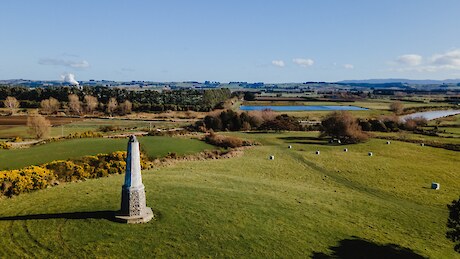 Background
Background
The Mataura River is found in the Murihiku region and is approximately 240km long. The river’s headwaters are located in the Eyre Mountains to the south of Lake Whakatipu. From there it flows southeast towards Gore, where it turns southward. It then passes through the town of Mataura and enters the Pacific Ocean at Toetoes Bay on the southern coast of the South Island. Much of its channel was braided.
Prone to flooding and ad hoc responses by local Government, there is a need to reconsider the current flood investment and flood plain management to move towards a climate resilient platform in support of enhanced cultural, economic, biodiversity and community outcomes.
Hokonui Rūnanga, Awarua Rūnanga, and Waihopai Rūnanga are working together with Te Rūnanga o Ngāi Tahu, Fonterra and Toitū te Whenua |LINZ to consider a re-imagined Mataura River system, based on the bringing together of catchment design methodologies and Mātauranga Māori (Māori Knowledge). This project will see future flood investment and flood plain management moving towards a climate resilient platform, in support of cultural, economic, biodiversity and community outcomes. This is based on more efficient land use and river systems management, to hold water at key points within the system, expand habitat areas and slow peak flow progression.
The initial phase (over two years) will be co-funded by Te Rūnanga o Ngāi Tahu, Fonterra and Toitū te Whenua| LINZ, with the implementation of the project planning to be agreed across wider agencies and partners for commencement from year 3.
Key Objectives and Goals
To ensure that effective planning and research informs future investment across the Mataura River system, the following goals/ objectives provide focus for our project development:
- improve the current Mataura River system management and re-establish natural buffers
- reduce the intensity of flood peaks in downstream bottlenecks such as Gore and Mataura townships
- enhance mahinga kai, cultural values and taonga species
- reintroduce mid-system wetlands
- restore riparian habitat
- provide alternative livelihood pathways for ngā rūnanga and communities.
